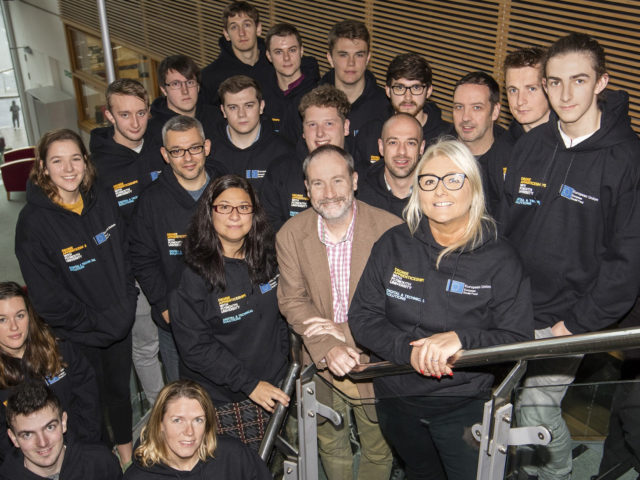Researchers from Georgia Institute of Technology has developed a tiny 3D-printed robot, that operates using piezoelectric effect. Vibrations from piezoelectric actuators or ultrasound sources make robot to move. Robot is about 2 mm long, 1.8 mm wide and 0.8 mm thick.
The robot movements can be corrected by adjusting the vibration frequency. Robots are constructed of micro piezoelectric actuators and polymer body. It was printed with the two-photon polymerization lithography method. Currently vibrations are provided by the external actuator, and can be also powered by piezoelectric shaker from underneath the surface, where robot moves. Robot movements depends on the frequency and amplitude of the external actuator vibrations, where amplitude can control the speed of the robot movement. Every robot can be adjusted to respond to different actuator frequencies, depending on the robot geometry. Different robot have different configuration and amount of legs.
Researchers also could manufacture even smaller robots, but adhesion forces between robots and surface are big enough. Using the specially developed playground, researchers can move several robots at the same time. Currently they are working on developing steering capability of the robot, and capability to jump and swim.
This research work was supported by the Georgia Tech Institute of Electronics and Nanotechnology, and is published at Journal of Micromechanics and Microengineering, “A 5mg micro-bristle-bot fabricated by two photon lithography”, DeaGyu Kim, Zhijan Hao, Jun Ueda and Azadeh Ansari.
“We are working to make the technology robust, and we have a lot of potential applications in mind”, said Azadeh Ansari, an assistant professor in the School of Electrical and Computer Engineering at Georgia Institute of Technology.
Citation: “Tiny vibration-powered robots are the size of the world’s smallest ant”, Research News, Georgia Institute of Technology.




